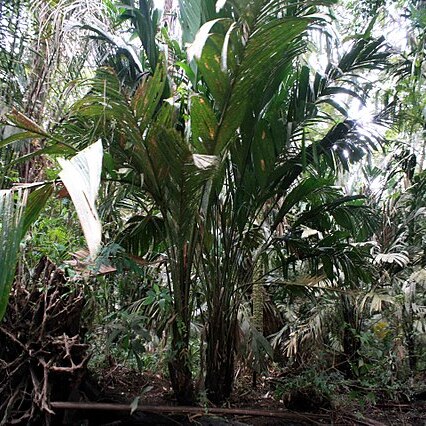A solitary palm. It can be clumping. It often forms dense colonies. The trunk is 10 m high. It is often 2 m high. It is 35 cm across. The leaves can be 7-10 m long and 2 m wide. The leaves are unsegmented unless separated by wind. The bract below the flower (spathe) is sack-like and fibrous. The flowering stalks comes from among the leaf bases. It is 1 m long. The fruit are hard and woody. They are round or with 2 lobes. The fruit are 4-6 cm across. The fruit can float in rivers.

